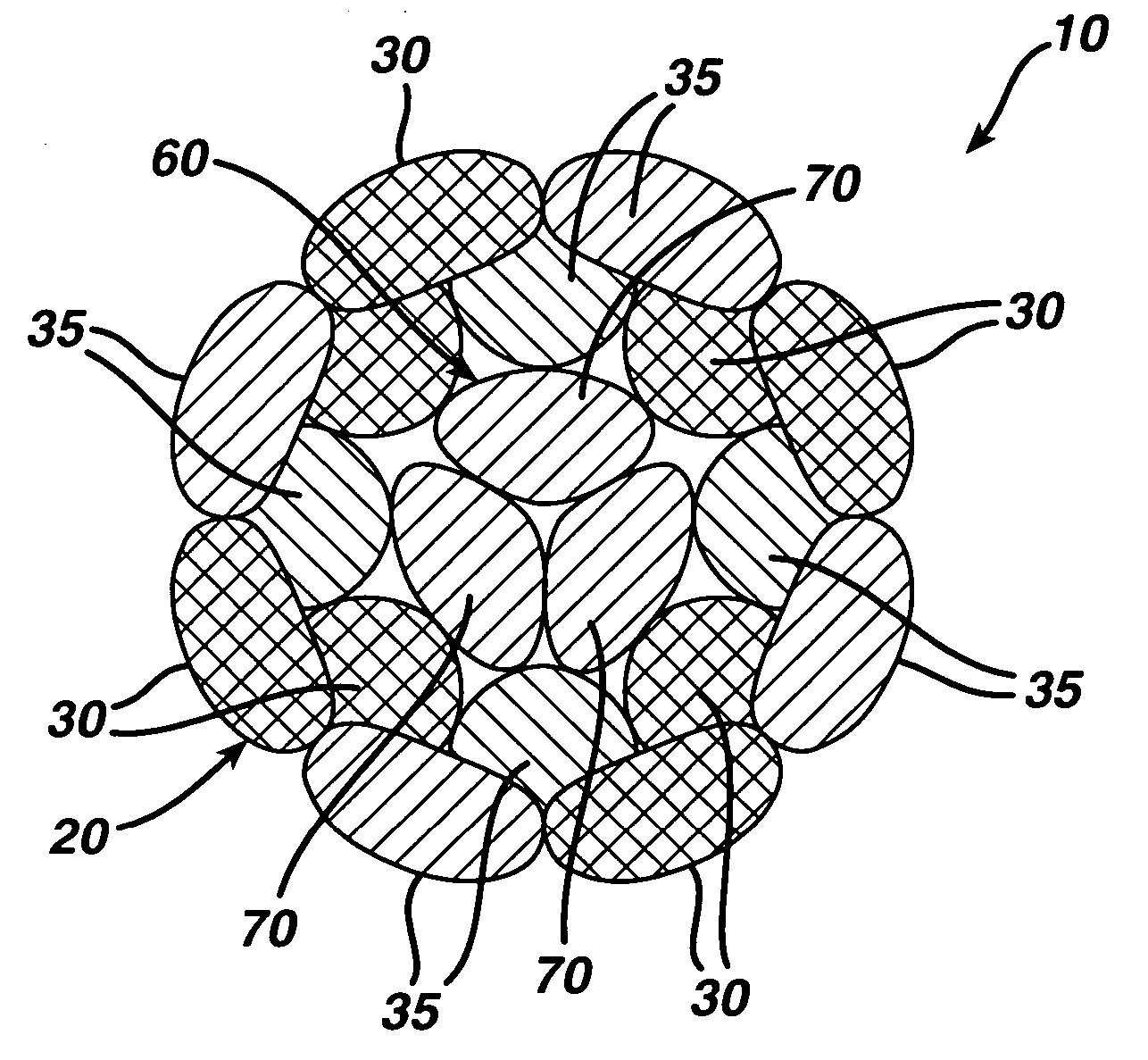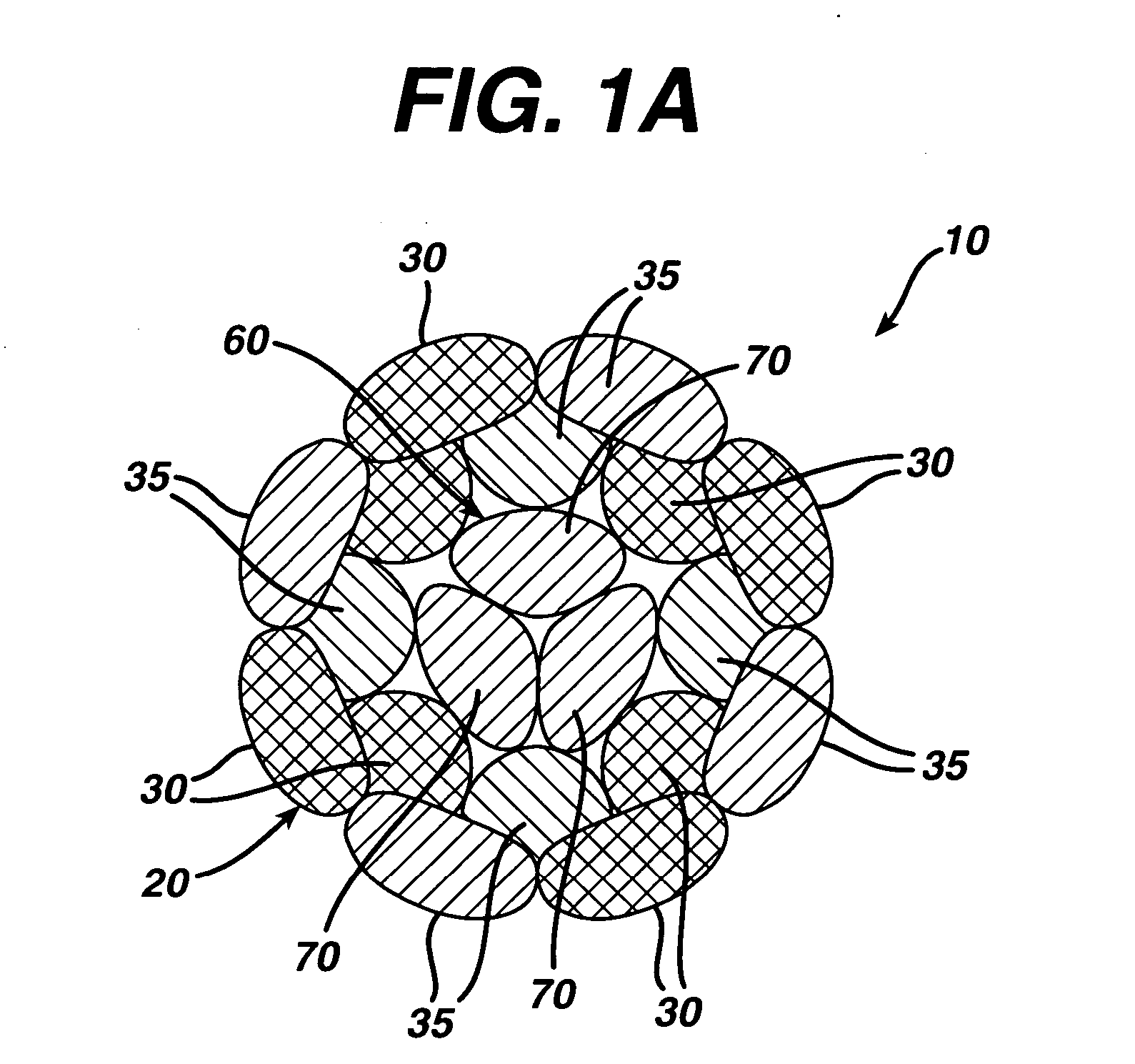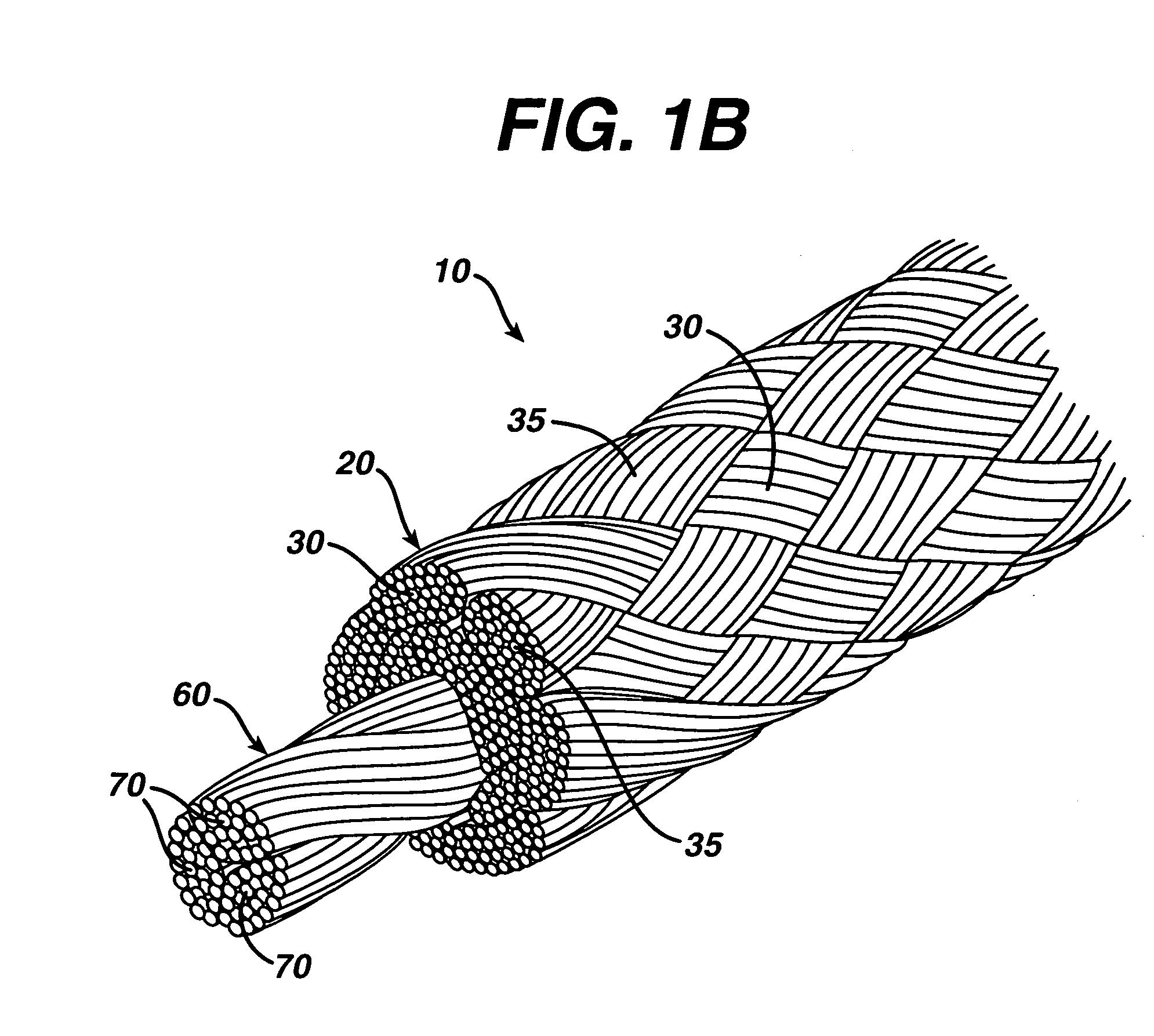High strength suture with absorbable core
a high-strength, core technology, applied in the field of surgical sutures, can solve the problems of compromising the surgical procedure, affecting the integrity of the suture, and so as to reduce the knot profile, and improve the absorption profile of the absorbable component of the suture.
- Summary
- Abstract
- Description
- Claims
- Application Information
AI Technical Summary
Benefits of technology
Problems solved by technology
Method used
Image
Examples
example 1
[0041] A suture of the present invention was manufactured in the following manner. The suture was made using a conventional maple (hollow) braider. The composite suture had a sheath of ultra high molecular weight polyethylene yarn and polydioxanone yarn. The sheath contained 45 wt. % ultra high molecular weight polyethylene and 55 wt. % polydioxanone. The core of the suture consisted of 100 wt. % polydioxanone yarn. Overall, the suture consisted of 38 wt. % ultra high molecular weight polyethylene and 62 wt. % polydioxanone. The nonabsorbable component of the suture construction consisted of eight 100-denier Dyneema Purity ultra high molecular weight polyethylene multifilament yarns (manufactured by DSM) that were loaded on the braider in the counterclockwise direction, and the polydioxanone component was a conventional multifilament polydioxanone yarn, such as that used to manufacture polydioxanone sutures by Ethicon, Inc., Somerville, N.J. The polydioxanone component consisted of ...
example 2
[0048] The tensile strength of the suture of Example 1 was tested in accordance with the United States Pharmocopoeia using the method for a constant rate of extension. In addition, the tensile strengths of the following commercially available sutures were also determined: an aromatic polyester (hereinafter referred to as PET) suture such as one manufactured by Ethicon, Inc., Somerville, N.J., and an ultra high molecular weight polyethylene / PET suture such as FIBERWIRE manufactured by Arthrex, Inc., Naples, Fla. The results of the testing are presented in Table 2.
[0049] This example compared straight and knot tensile strength of suture of the present invention to the FiberWire suture and the PET suture. The comparison shows that the use of polydioxanone in the core of the suture of the present invention had no adverse effect upon the physical properties of the suture. In order to compare strength of the sutures that have slightly different diameters, straight and knot strength was n...
example 3
In Vitro Knot Tensile Breaking Strength Retention (BSR) & Mass Loss Over Time
[0051] Samples of the suture of Example 1 for In Vitro Knot Security were degraded in a buffer of pH 7.27 and a water bath with temperature 57° C. Knots were secured with 5 throws and placed in the buffer container. Five knot-secured sutures from each lot were tested for each time period. Sutures were tested before and after degradation using the Instron Tensile Tester employing a Hermann's loop fixture, 2″ / min XH speed to obtain breaking strength. Note: Because this test was a loop, the knot strength was approximately twice that for the typical USP knot tensile test. The mass remaining was obtained by drying and weighing the sutures after different times in the buffer solution.
[0052] In addition to the suture of Example 1 consisting of about 40 wt. % high molecular weight polyethylene and about 60% polydioxanone, another suture was tested consisting of 100 wt % polydioxanone. Table 3 provides the in vitr...
PUM
| Property | Measurement | Unit |
|---|---|---|
| wt. % | aaaaa | aaaaa |
| temperature | aaaaa | aaaaa |
| elongation | aaaaa | aaaaa |
Abstract
Description
Claims
Application Information
 Login to View More
Login to View More - R&D
- Intellectual Property
- Life Sciences
- Materials
- Tech Scout
- Unparalleled Data Quality
- Higher Quality Content
- 60% Fewer Hallucinations
Browse by: Latest US Patents, China's latest patents, Technical Efficacy Thesaurus, Application Domain, Technology Topic, Popular Technical Reports.
© 2025 PatSnap. All rights reserved.Legal|Privacy policy|Modern Slavery Act Transparency Statement|Sitemap|About US| Contact US: help@patsnap.com



